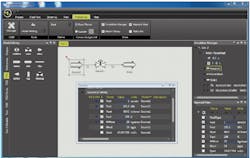Simulation tools in process industries like oil and gas, refining, utilities and chemicals typically lean heavily toward legacy systems and practices. But with energy, pricing and competitive landscapes changing, Schneider Electric saw a need to build its latest process simulator release from the ground up, taking full advantage of modern technologies to improve the user experience, and reduce time and cost.
SimSci SimCentral for Process Utilities is a new platform to manage how processes are engineered across their entire lifecycle. The platform enables users to streamline process utility design, collaborate for process improvement and simplify modeling complexity. It’s the first commercially available platform, Schneider said, designed to take full advantage of current web and cloud technologies. It embraces the expectations of the next generation of workers, helping to accelerate adoption, usage and time-to-value.
The improved user interface is important for WorleyParsons, an engineering, procurement and construction (EPC) service company that saw a need for a better process simulation work environment.
“By removing complexity from engineering process modeling, SimCentral for Process Utilities lets WorleyParsons deliver more value and respond faster to our clients’ needs, helping us to deliver greater service excellence,” said Loïc Coyot, principal/lead process engineer at WorleyParsons, which was an early adopter of the platform. “By enhancing the user experience, Schneider Electric Software allows us to simulate with greater efficiency, resulting in our ability to provide more high-quality process design to our clients in less time.”
Key new features and functionalities of SimSci SimCentral for Process Utilities include:
- Unified lifecycle simulation: A model can be taken through all stages of the plant lifecycle, including across design, training and operations.
- Ease of use: A modern user interface puts the user first, showing relevant features and libraries; role-based library views ease navigation, and equation views are easier to see and change.
- Expanded problem solving: An intuitive model-writing environment unlocks new operations and equations modeling to solve difficult simulation challenges.
- Improved interactivity and control: A “continuously solved” approach is possible whereby changes to input variables can directly update all output variables.
- Faster calculation speed: An advanced design accommodates public or private cloud computing environments to scale performance speed as needed.
- Collaborative engineering: As a productivity feature, users can concurrently work on the same model across regional time zones, departments or other organizations.

